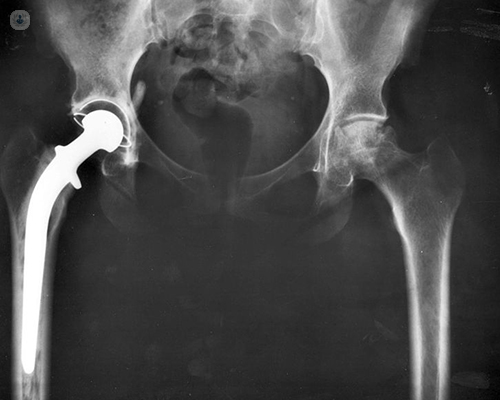How long can a hip replacement be expected to last in young patients?
Written by:Hip replacement surgery involves attaching a hip prosthesis to the affected bone. Depending on the age of the patient, how long a hip replacement will last can differ. A hip prosthesis may fail for a number of reasons, or simply, over time they succumb to wear and tear. Here we discuss what can impact a hip prosthesis and how long they can last in younger patients.
How long does a hip replacement last in young adults?
Hip prostheses, also known as a hip replacement, are somewhat complicated in young patients (under the age of 55), since their pace of life is not the same as that of adult patients. In women, for example, in addition to the usual discomfort of pain or stiffness, there is also a potential limitation on natural childbirth. Age is a significant factor in the survival of a hip prosthesis, a solution that for many people is the only possibility of maintaining their regular lifestyle. Another factor to be considered is the improvement and development of new prosthetic designs. In countries such as Finland, Australia and Canada, there has been an increase in the performance of arthroplasties in young adults.

What are the complications of a hip replacement?
There are some factors that can cause hip replacement prosthesis failure.
The main one is the loosening of the prosthetic device The hip prosthetic is attached to the patient's bone with or without cement, and the wear caused by the friction of the components of the hip prosthesis generates an inflammatory reaction that gradually destroys the bone until the prosthesis disengages from the bone.
In this situation, the objective of revision hip surgery is to improve the fixation to the bone and to reduce the friction and wear to limit the inflammatory reaction.
How long can a hip replacement last for young adults?
The truth is that there are some models with which an exact period cannot be given, while there are others that have shown to be successful for at least 10, 25 and even 30 years.
According to the National Institute for Clinical Excellence (NICE), the criterion of excellence is based on a revision rate of less than 10% up to 10 years after the original procedure. In young patients, it should be more demanding, for example, lasting up to 20 years - but for now statistics put the period at 15 years. It is important that the surgeon explains to the patient the difference between 'the latest' and 'the best'.
It must be taken into account that the age and level of physical activity of the patient affect the durability of the implant. It is estimated that the risk of stem loosening decreases by 1.8% for each year of age at the time of arthroplasty. The degree of wear and tear is determined by the patient's type of work, leisure, certain diseases, or body mass index (BMI).


